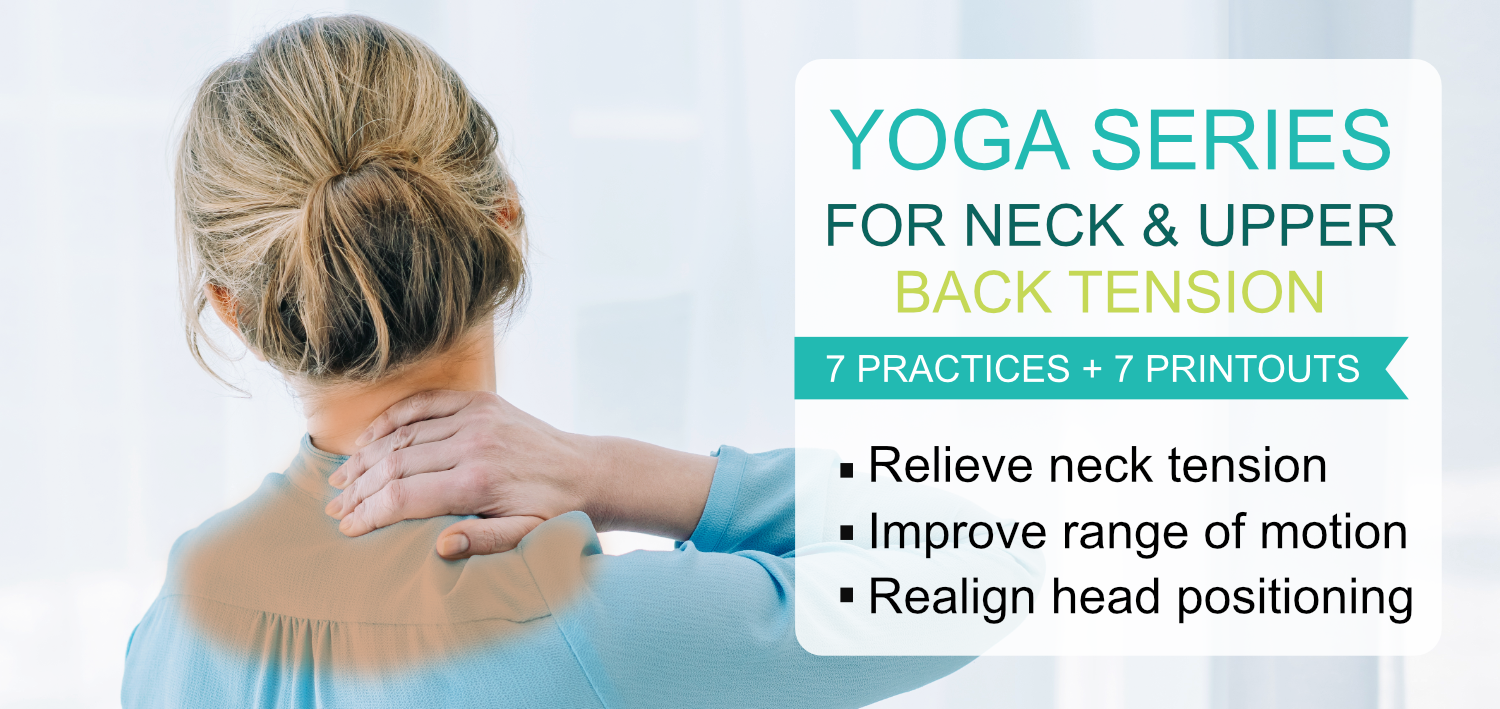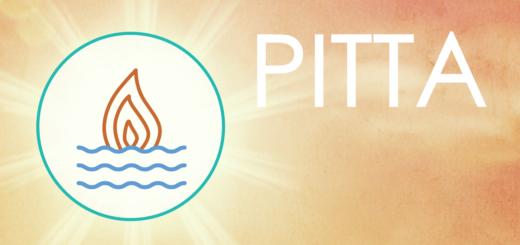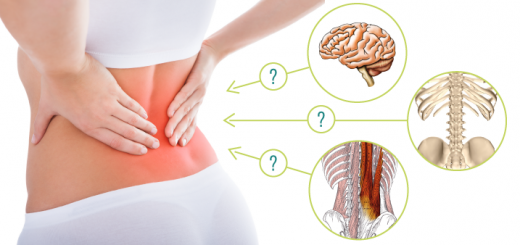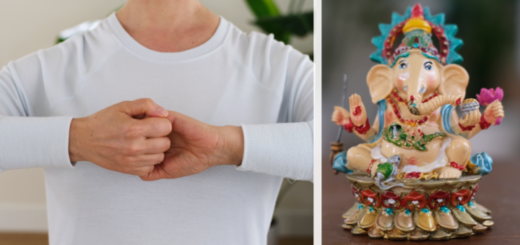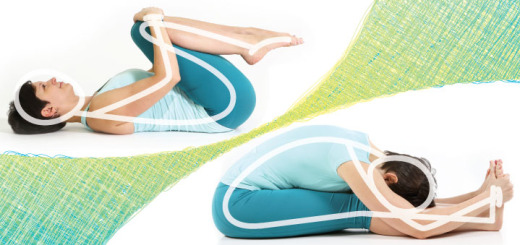How to relieve tension in your neck and upper back
0Last week we explored three main reasons that produce neck tension. The main question is – how do we deal with different kinds of neck and upper back tension and achieve long-lasting results?
Here are four main steps we need to take to deal with your current discomfort and to prevent future occurrences:
- Investigate your discomfort. To get more clarity about causes of your neck tension, first you need to be precise about where you experience it. Once you pinpoint the location of your discomfort, you might be able to link it to some habitual activity. Do you feel it mostly on one side of the neck? Evaluate the positioning of your computer screen to make sure that you are not looking to one side all day long. Is it linked to the movement of your arm? Notice how you use that arm in the course of your day. Do you feel your shoulders shrugging toward the ears? Evaluate your stress level and ramp up your stress management strategies. These are just some examples of what might be going on. Use this assessment practice to observe what’s going on in your body, and then try to figure out how you acquired that pattern of tension.
- Reduce or eliminate activities that cause tension. Be mindful of how you move and position your body in the course of your day. Place your computer screen directly in front of you, elevate the position of your laptop, alternate which arm your use for your tasks, stop displacing your head forward when you look at your phone, take breaks, and so on. If you continue to engage in behaviors that created your neck tension, you will continue to experience neck tension, no matter how much yoga you do, or how many massages you get.
- Relax your eyes. Eye strain is a big contributor to neck pain and tension headaches. If you spend a lot of your time in front of a screen, try following the 20-20-20 rule, which means taking a 20-second break from the screen every 20 minutes by looking at least 20 feet away. This helps to relax your eye muscles.
- Manage your autonomic state. The two major muscles of the neck and upper back (trapezius and sternocleidomastoid) are innervated by the cranial nerve XI (also called “spinal accessory nerve”), which is intertwined with the famous Vagus nerve that regulates the state of our autonomic nervous system. This tells us that the tone and activity of the major neck muscles are closely tied to the state of our autonomic nervous system. You can calm your nervous system by resting in comfortable supported positions, deep relaxed breathing, soothing sounds, or any activities that make you feel peaceful and content. This will help relax your neck muscles, as well.
When you are ready to work with neck and upper back tension in your yoga practice, there are three main steps you need to take to relieve neck tension:
Step 1: Retrace your evolutionary steps from baby to toddler
- Use Cobra pose to imitate the baby on the stomach, lifting your head and upper body up to begin awakening your trapezius muscles,
- Spend time on your hands and knees doing kneeling postures (ala crawling) with various head movements to awaken trapezius and SCM in partial weight bearing position,
- Focus on proper head alignment over the ribcage in standing postures to support muscular organization in upright positon.
Step 2: Relieve tension with intentional head, thoracic spine and arm movements
Just like a tree needs to have an extensive root system to support the weight of the trunk and the crown, your neck requires extensive muscular connections to the rib cage, thoracic spine and shoulder girdle to support the weight of the head and allow for incredible mobility. To release neck tension, we need to do more complex movements that include the movement of the head, thoracic spine and the shoulder girdle (via the movement of the arms).
- Head movements include tucking the chin in and lifting it up, turning the head, leaning the head, and making the head follow the sweeping motion of the arm,
- Thoracic movements include rounding and flattening of the thoracic spine, rotating it, flexing it sideways and elongating it upwards by lifting the vertebrae off each other,
- Arm movements include horizontal and vertical sweeping motions, pushing and pulling actions done in non- and partial weight-bearing positions.
All those moments can be done by themselves or added to more traditional poses.
Step 3: Create support
The shapes of your spinal curves are dependent on one another. That is why you need to provide a foundation for your cervical (neck) curve by aligning all your curves on top of each other and supporting their shape. For example, your thoracic (upper back) curve might be more or less pronounced, resulting in a more curvy or flatter upper back. Those who have curvier upper backs tend to slouch, and those who have flatter upper backs tend to hold a lot of tension between the shoulder blades. Through our yoga practice we can counteract those tendencies, while at the same time supporting our natural curves.
This is the methodology I used when I designed our new 6-week Yoga Series for Neck and Upper Back Tension. This series aims to relieve tension in your neck and upper back, to create support for your spinal curves, to calm your nervous system and to relax your eyes.
In this yoga series you will:
- Strengthen the neck and upper back muscles that support your head in the upright position with backbends and partial weight-bearing postures,
- Release neck and upper back tension by mobilizing your neck, thoracic spine and shoulder girdle,
- Increase mobility in your thoracic spine by taking it through the full range of motion,
- Promote better alignment between your spinal curves by elongating the spine while supporting the natural shape of your curves,
- Address tension headaches with specific head and eye movements,
- Calm your nervous system through resting in supported positions, deep breathing with an emphasis on lengthening exhalation, relaxing imagery and vibrating sound.
This series consists of entirely new content that I haven’t published before. In this series you will get six video practices with printouts of all practice sequences, plus a short bonus practice specifically for your eyes. Here is a quick overview of the series.
Yoga Series for Neck and Upper Back Tension is now available for $95.
For the next two weeks you can enjoy 30% off discount with introductory pricing of $67.
(to get 30% off please enter code promocode30 at checkout, good till November 21, 2019).
You can purchase this series here.
- After purchasing, you can watch those practices online or on your Sequence Wiz Home Yoga Practice app (Apple and Android platforms).
- Sequence Wiz members can request editable sequences from the series for their own use. Learn more about Sequence Wiz membership >
Hope you find this series useful!
[jetpack_subscription_form]

